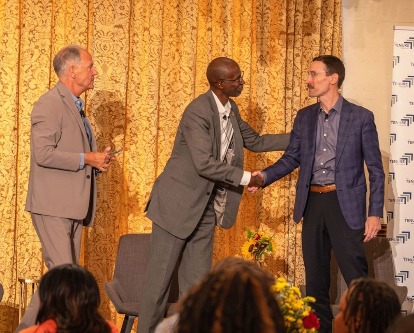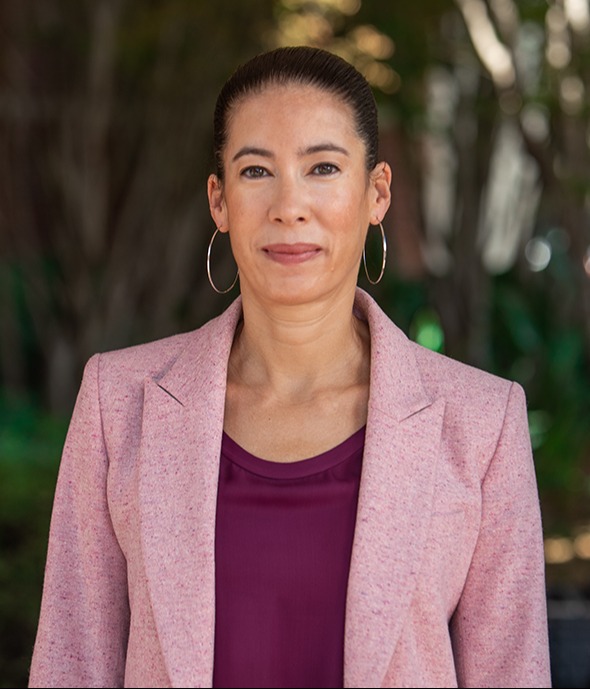
- 213-740-8420
- sarahtow@marshall.usc.edu
Sarah Townsend studies the psychological foundations of inequality. Her research reveals the dysfunctional behaviors and physiological costs that can result when individuals’ cultural norms collide with the dominant cultural norms of organizations. She examines how these“cultural divides” are often a hidden source of inequality, but how they can be used to lessen opportunity gaps and fuel greater cross-group understanding. The director of the Culture, Diversity, and Psychophysiology lab (CPD Lab) at USC, Dr. Townsend has received recognition including,being named a “Rising Star” by the Association for Psychological Science and “Professor of the Week” by Poets & Quants.

Areas of Expertise
Departments
INSIGHT + ANALYSIS
Op-Ed: How a Culture of Conformity Can Stymie Even the Best of DEI Intentions
SARAH TOWNSEND, associate professor of management and organization, posits that overlooking inclusion is preventing companies from optimizing their DEI efforts for FAST COMPANY.
NEWS + EVENTS
USC Marshall Faculty Present Latest Findings at Annual Research Fair
Faculty from across five departments at the business school offered research on behavioral economics, data privacy, AI, gender participation, and causal inference.
Tenure Project Conference Prepares Junior Faculty to Navigate Tenure Track
USC Marshall hosted the third annual conference focusing on workshops, mentorships, and networking for junior faculty from across the nation.
USC Marshall to Host 2024 Tenure Project
The 3rd annual conference focuses on important issues affecting Black, Latinx, and Native junior faculty obtaining tenure in U.S. business schools.
Inclusive Excellence
USC Marshall’s Office of Diversity, Equity, and Inclusion integrates its strategic initiative with academic research and engagement opportunities for students, staff, and faculty.
Marshall Celebrates Asian Pacific American Heritage Month
What's in a Name?
Celebrating Black History Month
USC Marshall's Office of Diversity, Equity, and Inclusion celebrate Black History Month with Community Conversation, Black history facts.
USC Marshall Celebrates MLK
RESEARCH + PUBLICATIONS
Educational institutions have increasingly sought to create diverse student bodies. Given these efforts, the present research asks two broad questions. First, to what extent do students’ interactions reflect the diversity of their educational settings? Second, when intergroup interactions occur, how do they impact students’ academic experiences and outcomes?Leveraging a longitudinal design and daily diary methods, we conducted the first large study (Ninteractions = 11,460) which tracks the frequency, quality, and consequences of meaningful cross-race and cross-social class interactions in university settings. We found that students reported far fewer cross-race and cross-class interactions than would be expected at chance given the racial and social class diversity of their student bodies. Furthermore, underrepresented racial minority students and students from working-class backgrounds experienced cross-race and cross-class interactions as lower quality than same-race and same-class interactions. Nevertheless, these cross-group interactions predicted better academic performance for racial minority students and those from working-class backgrounds. They did so through different processes: cross-race interactions improved racial minorities’ academic performance by reducing social identity threat, whereas cross-class interactions improved the academic performance of students from working-class backgrounds by increasing sense of belonging. Together, these findings suggest that diversifying educational settings is not enough to encourage meaningful intergroup interactions. Furthermore, fostering intergroup interactions may be one important pathway toward reducing racial and social-class disparities in students’ experiences and academic outcomes in college.
A rich body of research throughout the social sciences demonstrates that bias--people's tendency to display group-based preferences--is a major obstacle in the way of promoting diversity, equity, and inclusion in the workplace. The current article moves beyond the single-level focus of prior theories of workplace bias to propose a novel theoretical model that conceptualizes workplace bias as a multilevel cycle. First, we discuss the theoretical foundations of our bias cycle theory and describe why understanding the nature of workplace bias--and effectively reducing it--requires considering the reciprocal influences of both individual and organizational levels of the cycle. Specifically, we describe how workplace bias operates as a cycle and then propose that successfully reducing workplace bias requires intervening across both the individual and organizational levels of the cycle. Second, because workplace bias is reproduced through both of these levels, we review and bring together literatures that are often considered separately: psychology research on reducing bias at the individual level and sociology and management research on reducing bias at the organizational level. Third, we use our bias cycle theory to formulate general principles for determining how to begin and how to pair interventions across levels. Finally, we conclude by discussing our theoretical contributions and outlining directions for future research.
COURSES